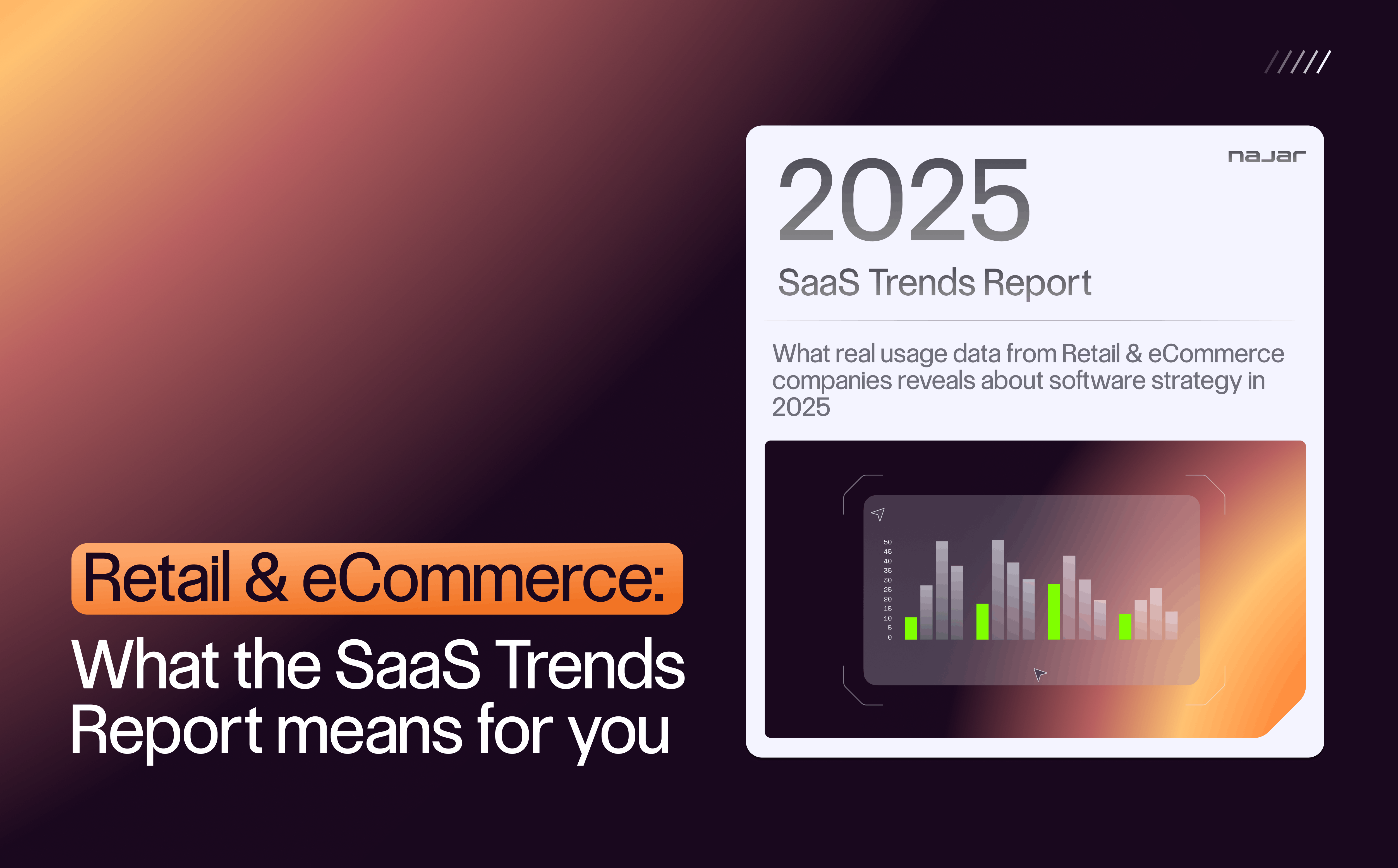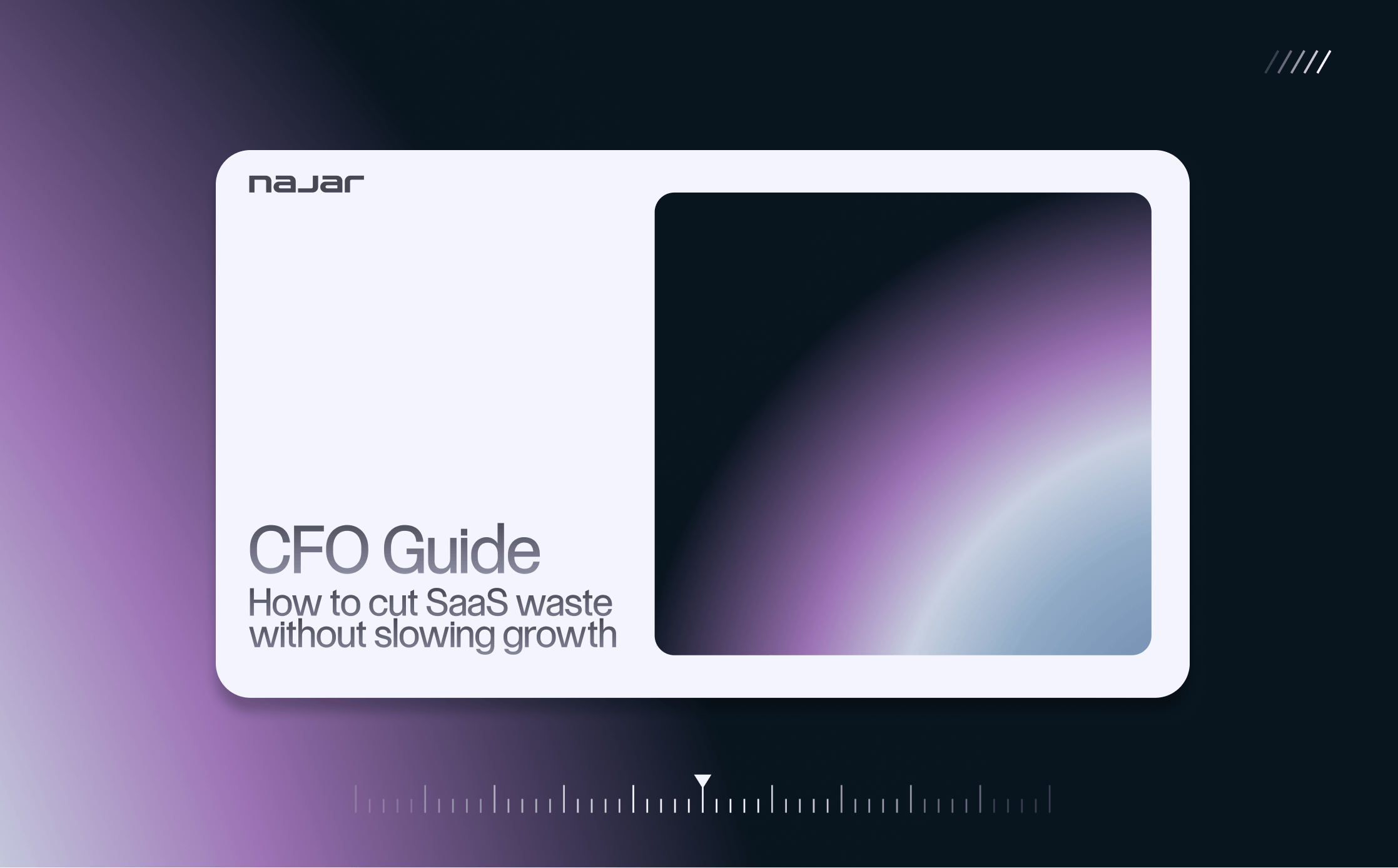You’re spending less, but expecting more. And in 2025, that’s a competitive advantage.
Our latest SaaS Trends Report reveals something Retail and eCommerce leaders already know intuitively: your stack isn’t just about running the business but rather about elevating the customer experience without wasting time, budget, or headcount.
But the real question is: now that you know how your peers are investing (or not), what do you do next? Let’s talk about what this year’s SaaS data actually means for you.
Customer experience is your north star: keep your CX stack aligned
In Retail and eCommerce, every missed click, delayed delivery, or clunky checkout is a lost customer. That’s why the most successful companies aren’t stuffing their stack with trendy tools, but investing in Tech that directly shapes the customer journey. The data is clear: tools tied to customer support, marketing automation, design, and e-commerce infrastructure consistently rank at the heart of Retail and eCommerce stacks as they touch what matters most, the customer. Your SaaS stack isn’t just an operational system, it’s a growth engine, but only if every tool is working toward the same goal: delivering fast, personalised, and frictionless experiences across every channel.
What this means for you:
Start by asking:
- Are your support tools enabling real-time help, or just opening tickets?
- Does your eCommerce stack scale with demand, or collapse during peak season like Black Friday, Christmas, and major sales periods?
- Is your marketing software helping you boost loyalty through personalisation, or blasting generic campaigns?
- Is design slowing down your landing pages, or helping you build more creative journeys?
Instead of overly focusing on software questions, we need to first ask experience-related questions. And in 2025, your ability to deliver a consistent, intuitive customer journey will be decided by the few tools that matter most, not the dozens sitting idle in your stack. The bottom line is if a tool doesn’t make the customer’s path smoother, faster, or more delightful, why is it there?
You don’t need “all the AI”, just the right AI for retail
AI is everywhere right now. Retailers are being constantly pushed to try the latest AI features from SaaS vendors. But in Retail and eCommerce, the smartest teams aren’t adopting AI just to keep up, they’re using it with precision. The brands making real progress aren’t the ones throwing AI at every corner of their business. They’re the ones identifying high-ROI use cases and focusing their AI efforts where it directly enhances customer experience or operational efficiency.
What this means for you:
Start by ignoring the noise. You don’t need to overhaul your entire stack to “become AI-driven.” Instead ask:
- Where are we spending the most manual time today?
- Which touch points have the biggest impact on customer satisfaction or conversion?
- Where could faster, smarter decisions improve inventory, support, or messaging?
In most Retail and eComm companies, the most effective AI use cases aren’t flashy, but rather, practical as they help in:
- Reducing response times in customer service
- Personalising campaigns based on customer behaviour
- Forecasting demand to avoid stock outs or overstock
- Automating content creation to speed up go-to-market of new products
AI that does less but does it better is your competitive edge. If you’re selective, you’ll get ahead. If you try to implement everything, you’ll most likely waste budget and dilute focus. And more importantly, AI doesn’t need to be visible to be valuable, it just needs to be aligned with where you create, and capture value.
“Best practice” is not your benchmark, your business model is
It’s tempting to compare your stack to what you see in Tech or Fintech companies as they’re often loudest in the conversation around SaaS and digital transformation. But here’s the truth: what’s “best practice” for a compliance-driven Fintech, or a scale-centred startup, won’t always make sense for a Retail or eCommerce brand focused on conversion and customer lifetime value.
What this means for you:
You need to build a stack that reflects how your business workshow your business works, not how someone else’s does.
- Tech companies optimise for speed and internal velocity.
- Fintech companies optimise for traceability and risk management.
- Retail and eCommerce optimise for experience, efficiency, and revenue per customer.
Your “core stack” shouldn’t be a copy-paste of what’s trendy, it should be built around:
- Operational workflows (logistics, sales, customer care)
- Revenue drivers (conversion rate, LTV, AOV)
- Customer expectations (personalisation, responsiveness, cross-channel consistency)
And importantly, don’t confuse more tools with better performance. You’re not behind if you have fewer licenses, you’re likely more intentional. In 2025, the winning Retail and eCommerce leaders are the ones who stop chasing best practices and start building stacks that mirror their reality: fast-moving, customer-first, and margin-aware.
This blog scratches the surface. Our full 2025 SaaS Trends Report dives deeper into the actual tools, patterns, and category-level data shaping stacks across your sector. If you want to see what your peers are doing, and where you might find your next savings or strategic edge, the report’s for you.
Download the full report below.




